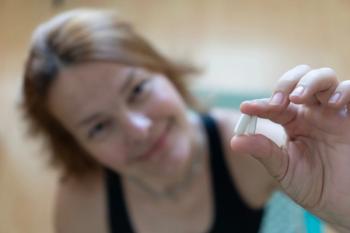
Breaking the Cycle of Premenstrual Problems
This is supported by Bayer HealthCare Pharma.
What Are Premenstrual Problems?
Many women experience symptoms before their menstrual period. This is commonly called premenstrual syndrome (PMS). With PMS, tiredness, breast tenderness, bloating, irritability, tension, and depression typically begin during the week before the menstrual period and improve within several days after it begins. A less common but more severe condition is called premenstrual dysphoric disorder (PMDD). It is a problem in 3% to 8% of women who are of childbearing age.
Symptoms of PMDD
A woman with PMS may have 1 or more of these bothersome symptoms, but women with PMDD have at least 5 symptoms that occur in a regular pattern prior to each menstrual period. To be considered PMDD, the woman must also have at least 1 symptom involving a mood problem (also called dysphoria), such as irritability, anxiety, depression, or anger. PMDD is severe enough to affect your daily life and interfere with relationships and your performance at work or school.
The cause of PMDD is not known, but symptoms seem to be triggered by changes in hormone levels (estrogen and progesterone) during the menstrual cycle. These hormone levels may also affect a brain chemical associated with mood. This chemical is called serotonin. Your doctor will decide if you have PMDD by evaluating your symptoms for several menstrual cycles using a symptom diary. Testing will also be done to make sure that you do not have other conditions with similar symptoms, such as the start of menopause, thyroid conditions, and mood or anxiety problems.
How Is PMDD Treated?
In general, women with PMS may benefit from lifestyle changes, such as increasing exercise, taking vitamins, and reducing salt, caffeine, sugar, and alcohol in the diet. Proper sleep habits may improve insomnia and fatigue. Pain relievers can be taken for the headache and muscle pain, and diuretics or "water pills" can reduce bloating. Medication is usually needed for the more severe symptoms of PMDD.
Antidepressants
Mood problems may be helped with antidepressant or antianxiety medications. Fluoxetine (Sarafem), sertraline (Zoloft), and paroxetine controlled-release (Paxil CR) are examples of antidepressants that are approved by the Food and Drug Administration for the treatment of PMDD. These medications increase the levels of the chemical in your brain that can help mood symptoms. When taking these medicines, some people complain of not being able to sleep, stomach upset, and sexual problems, however. The medications for anxiety, such as alprazolam (Xanax), can help some women if the antidepressant medicine does not work, but they are not used very often because there is the possibility that patients can develop an unhealthy dependence on the medication.
Hormone Treatments
The use of medications that change your hormone levels can also help PMDD. A type of medicine called gonadotropin-releasing hormone agonists work by lowering hormone levels and preventing you from getting your period. Although this helps the symptoms of PMDD, many women complain of side effects from the medicine, such as hot flashes and vaginal dryness. Another option is the use of oral contraceptives, also called "the pill." These can help symptoms by preventing the release of the egg (ovulation) and providing more consistent levels of hormones over the menstrual cycle. These products can be a good choice for many women who desire contraception, but women who use tobacco or who have blood clots, gallbladder disease, high blood pressure, or certain types of cancers should discuss other options with their physicians.
What's New for PMDD?
Recently, a new oral contraceptive has been designed to shorten the length of the part of the cycle when inactive pills are taken and menstrual bleeding occurs. This is sometimes called the hormone-free period. These products provide even levels of hormones for a longer period of time and can help women who have heavy bleeding or PMDD symptoms while taking inactive pills. One example is the "24/4" pill, which shortens the length of the hormone-free period from 7 days to 4 days. Yaz (ethinyl estradiol and drospirenone) is a "24/4" product that was recently approved for the treatment of PMDD and acne in women who choose this form of contraception. In clinical studies, women reported significant improvement in both physical and psychological symptoms of PMDD. The use of the "24/4" regimen also results in a shorter and lighter menstrual flow. People who are at risk for high potassium levels because of medications or medical conditions should avoid the use of products containing drospirenone.
In summary, it is important to match the treatment of PMDD to each woman's needs. A symptom diary can be useful to identify the timing of symptoms and determine the best treatment approach. Lifestyle changes, including diet and exercise, can be combined with medications to manage symptoms. Oral contraceptives, especially those with a shorter hormone-free period, provide an alternative to antidepressants for those who also desire a contraceptive method.
Dr. Raney is an associate professor of pharmacy practice at Midwestern University College of Pharmacy-Glendale, Glendale, Ariz.
Newsletter
Stay informed on drug updates, treatment guidelines, and pharmacy practice trends—subscribe to Pharmacy Times for weekly clinical insights.













































































































































































































